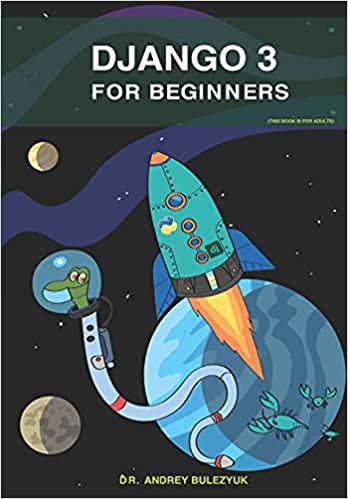- Breaking Down the AI-Powered SEO Innovations from Google I/O
- How Google’s MUM Algorithm is Set to Transform Search Engine Optimization
- Embracing the Future: Adapting Your SEO Strategy for AI-Driven Changes
- Maximizing Your Online Presence: Leveraging AI Tools for SEO Success
Breaking Down the AI-Powered SEO Innovations from Google I/O
At the recent Google I/O conference, the tech giant unveiled a slew of AI-powered innovations that are set to revolutionize the world of search engine optimization (SEO). As Google continues to push the boundaries of artificial intelligence, it’s essential for businesses and marketers to stay ahead of the curve and adapt their SEO strategies accordingly. In this article, we’ll break down the key AI-driven advancements announced at Google I/O and explore their potential impact on SEO.
One of the most significant announcements at the conference was the introduction of Google’s Multitask Unified Model (MUM). This AI model is designed to better understand and process complex search queries, providing users with more accurate and relevant search results. MUM is capable of understanding multiple languages and can analyze text, images, and videos to deliver a more comprehensive search experience. As MUM becomes more integrated into Google’s search engine, businesses will need to optimize their content for this new AI-driven approach to ensure they remain visible in search results.
Another notable development from Google I/O is the expansion of the company’s AI-powered language model, BERT. BERT, which stands for Bidirectional Encoder Representations from Transformers, is designed to improve the understanding of natural language in search queries. With the expansion of BERT, Google aims to provide more accurate search results by better understanding the context and intent behind users‘ search queries. This means that businesses will need to focus on creating high-quality, contextually relevant content to rank higher in search results.
Google I/O also showcased advancements in AI-driven image recognition and analysis. Google Lens, the company’s visual search tool, is set to become more powerful and accurate, allowing users to search for information using images alone. This development highlights the growing importance of optimizing visual content for search engines, as well as ensuring that images are properly tagged and described to improve their discoverability.
Finally, Google’s AI-driven advancements extend to the realm of voice search and virtual assistants. With the continuous improvement of Google Assistant, users are increasingly relying on voice commands to search for information and interact with websites. As a result, businesses must optimize their content for voice search by focusing on conversational language and long-tail keywords to ensure they remain competitive in this rapidly evolving landscape.
How Google’s MUM Algorithm is Set to Transform Search Engine Optimization
Google’s Multitask Unified Model (MUM) is a groundbreaking AI algorithm that promises to significantly transform the landscape of search engine optimization. MUM is built on the foundation of the Transformer architecture, which is the same technology behind Google’s BERT algorithm. However, MUM takes it a step further by being 1,000 times more powerful than BERT, enabling it to process and understand complex search queries with greater accuracy and efficiency.
One of the key features of MUM is its ability to understand and process information across multiple languages and modalities, such as text, images, and videos. This cross-modal understanding allows MUM to provide more comprehensive and relevant search results, even for queries that may not have a direct answer available in a single source. For instance, if a user searches for „how to fix a bike chain,“ MUM can analyze text-based articles, video tutorials, and even images to provide a complete answer to the user’s query.
From an SEO perspective, the introduction of MUM will require businesses to adapt their content strategies to cater to this new AI-driven approach. This may involve creating content that is more contextually relevant and optimized for multiple languages and formats. For example, businesses may need to invest in creating high-quality video content, optimizing images with descriptive alt tags, and ensuring that their written content is easily translatable into other languages.
Another important aspect of MUM is its ability to understand and process long-tail keywords and complex search queries. This means that businesses will need to focus on optimizing their content for more specific, niche topics and questions that users may be searching for. By doing so, they can increase their chances of ranking higher in search results and attracting more targeted traffic to their websites.
In summary, the introduction of Google’s MUM algorithm is set to bring about significant changes in the world of search engine optimization. Businesses and marketers must adapt their content strategies to cater to this new AI-driven approach, focusing on creating contextually relevant, multi-modal content that addresses the needs and queries of users across different languages and formats. By staying ahead of the curve and embracing these changes, businesses can ensure that they remain competitive in the ever-evolving landscape of SEO.
Embracing the Future: Adapting Your SEO Strategy for AI-Driven Changes
As Google continues to integrate AI-driven technologies like MUM and BERT into its search engine, businesses must adapt their SEO strategies to stay competitive and maintain visibility in search results. Embracing these changes and incorporating them into your SEO approach will not only help you stay ahead of the curve but also ensure that your website remains relevant and accessible to users. In this section, we’ll discuss some key steps to adapt your SEO strategy for the AI-driven future.
First and foremost, focus on creating high-quality, contextually relevant content that addresses the needs and queries of your target audience. With AI algorithms like MUM and BERT prioritizing content that provides comprehensive and accurate answers to users‘ questions, it’s essential to invest in content that is both informative and engaging. This may involve conducting thorough keyword research to identify long-tail keywords and niche topics that your audience is searching for, as well as creating content in various formats, such as text, images, and videos.
Next, optimize your content for multiple languages and formats to cater to the cross-modal understanding capabilities of AI algorithms like MUM. This may involve translating your written content into different languages, ensuring that your images are properly tagged and described, and creating high-quality video content that complements your written articles. By doing so, you can increase the chances of your content being discovered and ranked higher in search results, regardless of the language or format in which users are searching.
Another crucial aspect of adapting your SEO strategy for AI-driven changes is optimizing your content for voice search. With the growing popularity of virtual assistants like Google Assistant, more users are relying on voice commands to search for information and interact with websites. To cater to this trend, focus on incorporating conversational language and long-tail keywords into your content, as well as structuring your content in a way that is easily digestible and accessible for voice search users.
Finally, stay informed about the latest developments in AI-driven search technologies and continuously update your SEO strategy accordingly. By keeping a close eye on the advancements announced at events like Google I/O and incorporating them into your SEO approach, you can ensure that your business remains competitive and visible in the ever-evolving landscape of search engine optimization.
Maximizing Your Online Presence: Leveraging AI Tools for SEO Success
In the era of AI-driven search engine optimization, businesses must leverage the power of AI tools to maximize their online presence and stay ahead of the competition. These tools can help you optimize your content, analyze your website’s performance, and identify areas for improvement, ensuring that your SEO strategy remains effective and up-to-date. In this section, we’ll discuss some key AI tools that can help you achieve SEO success in the age of AI-driven search technologies.
One of the most powerful AI tools for SEO is content optimization software that uses natural language processing (NLP) and machine learning algorithms to analyze and optimize your content. Tools like Clearscope, MarketMuse, and Frase can help you identify relevant keywords, analyze your competitors‘ content, and generate content briefs that are optimized for search engines. By leveraging these tools, you can create high-quality, contextually relevant content that appeals to both users and AI-driven search algorithms like MUM and BERT.
Another essential AI tool for SEO success is website analytics software that uses machine learning algorithms to analyze your website’s performance and provide actionable insights for improvement. Tools like Google Analytics, Adobe Analytics, and Moz can help you track your website’s traffic, identify popular content, and uncover areas where your SEO strategy may be lacking. By using these insights, you can make data-driven decisions to optimize your website and improve its visibility in search results.
AI-driven keyword research tools are also invaluable for maximizing your online presence. Tools like Ahrefs, SEMrush, and Ubersuggest can help you identify long-tail keywords and niche topics that your target audience is searching for, as well as analyze your competitors‘ keyword strategies. By incorporating these keywords into your content, you can increase your chances of ranking higher in search results and attracting more targeted traffic to your website.
Lastly, consider using AI-powered link-building tools to improve your website’s authority and search engine rankings. Tools like LinkAssistant, BuzzStream, and Pitchbox can help you identify high-quality, relevant websites to build backlinks from, as well as automate the outreach process. By building a strong backlink profile, you can enhance your website’s credibility and improve its visibility in search results, ensuring that your business remains competitive in the AI-driven SEO landscape.








0 Comments